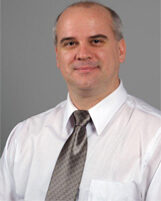1. General information
This component of the research program shall be undertaken by a MS candidate to implement advanced algorithms already developed on a prototype hardware platform so that performance analysis of the system can be conducted on a set of commercial grade MEMS inertial sensors for the purposes of estimating attitude for precise positioning/orientation of a pedestrian navigation system for an Army soldier-navigation-solution (SNS) application.
2. Research Project Proposal
Principle objective of this component of the research program is to synthesize the estimation algorithms into a hardware platform so that data gathering and functional tests capabilities can be conducted on a physical system in ETS laboratory. This program offers to students an exposure to inertial navigation systems theory and an ability so realize a pedestrian navigation system whose focus shall be the pointing accuracy of a SNS for a forward looking target. The student shall learn how to mechanize navigation algorithms into a model using established engineering tools of Matlab/Simulink. Portions of the model shall be written in C++ for speed and space efficiency. The emphasis in a two year Masters program at ETS provides an opportunity to a student to learn sufficient theory of a particular application, and then focus on product development, testing and refinement of a system.
Several aspects of engineering challenges shall be confronted by the student before the system is fully operational. During the final phase of the program the student will have several algorithms available to perform parametric studies on various varieties of approaches developed to solve the attitude estimation problem through low cost MEMS inertial sensors.
Selection of MEMS sensors candidate will be performed to design a data acquisition platform for the study. Chronologically the student can expect to learn initially the theory of inertial navigation, and standard algorithms implemented in current strap-down navigation systems. He/she will also be exposed on how to recognize various sources of noise bands occurring within the MEMS inertial sensors. Standard ways to calibrate an inertial sensor in a laboratory, using rate table and ovens to study temperature dependant effects on cheap inertial sensors (if possible), ways to mitigate those effects, via deterministic and stochastic filtering techniques, ground alignment techniques, and decoupling of the vertical and lateral channels so that bearing can be estimated accurately without instabilities and oscillatory effects.
In conclusion a two year Masters program at ETS specializing in avionic systems provides a student with broad areas of expertise, spanning from systems theory, hardware and software design, mechanization and testing of algorithms for implementing and enhancing performance metrics of attitude accuracies for commercial grade ensemble of MEMS inertial sensors.
3. Importance for the partner
Capstone report has listed new technologies which are important for the Canadian Soldier. Numerica Technologies is working on a larger project of ETS contribution. The determination of the position of a target for a soldier is of great importance for our partner. The soldier should be equipped with light devices, efficient technologies, precise and robust embedded systems. Such attitude determination system should have all these qualifications so that the soldier will use it with minimal complexity. For example only, the end result device may be integrated within the helmet of the soldier. An optical monocular lenses could be deployed with a cross target in the center of the optical such that the soldier can fix his desired object. The electronic within the system should be capable of computing in real-time the precise attitude and position of the target such that this information could be relayed to other team element part of the soldier infrastructure. ETS will play a portion of this role to focus its research on attitude determination. The ranging determination and analysis will be cover by another research group of Numerica.
4. Interaction with industry
The student will work in collaboration with his professor, professional research engineer, the rest of the team and our partner collaborator. He will spend 50% of his time with the industry partner Numerica whose office is based in Montreal. The main industrial project supervisor will be Mr. Pierre Gosselin
5. Deliverables and Schedule
Year #1:
Research proposal and navigation MEMS sensor survey (Report #1)
Year #2 :
System analysis, prototype implementation and first analysis (Report #2)
Improvement of the system and algorithms (Report #3)
Final Master’s degree report.
Note: During the first year Master’s student will be focused on lectures properly selected for his research project.
![]()
